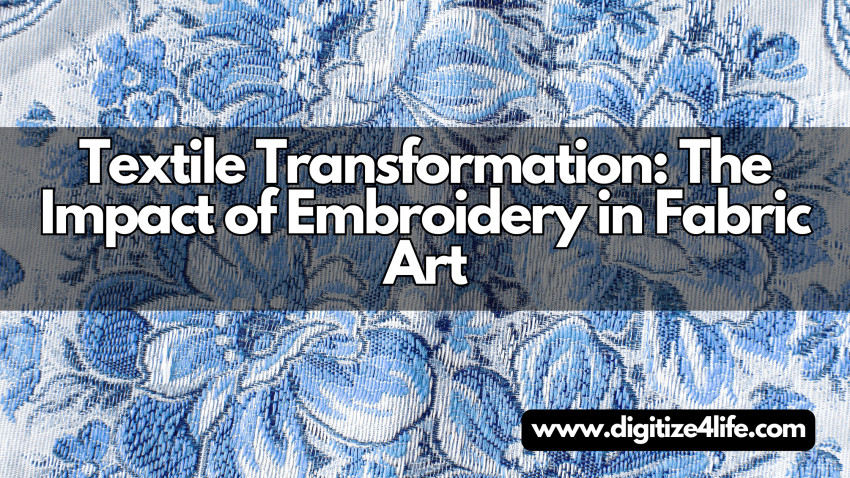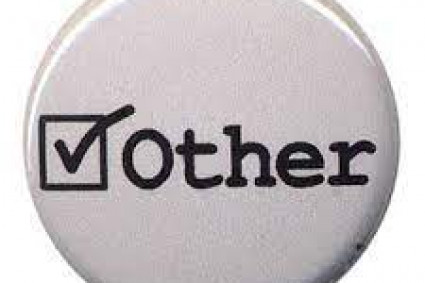
Introduction:
Embroidery, the decoration of material with needle and thread, has been a valued craft for centuries. This advanced form of textile art no longer adds aesthetic value to fabric, but also carries cultural, historical and personal significance. From delicate hand stitched designs to ambitious and contemporary to machine embroidery — embroidery is easy.
The Art of Embroidery: A Brief Overview
Embroidery uses a needle to spread the thread. It can also contain different materials, beads, pearls, feathers and sequins. Crafts range from simple stitches to intricate designs that create texture and images on the fabric. There are several embroidery techniques and they consist of:
Surface Embroidery: Stitches are made in the upper part of the fabric.
Counted Threads: Patterns are created by counting the threads of the material.
Needle Tip: Stitches cover the entire floor of the fabric.
Cross Stitch: Designs are created with X-shaped stitches.
Historical Significance of Embroidery
Embroidery has a rich history that spans cultures and continents. Some of the earliest examples come from historic China, Egypt, and India. Historically, embroidery has been used to celebrate fame and fortune, with intricate designs adorning royal garments, spiritual garments and ceremonial garments.
In medieval Europe, embroidery became an important part of religious art, church linens, altar cloths and clothing were decorated with complex patterns. The famous Bayeux Tapestry, almost 70 meters long embroidered fabric, depicts the action leading up to the Norman Conquest of England in 1066 and is an excellent example of historical narrative embroidery.
Cultural Impact of Embroidery
Embroidery is more than just decorative work; it is a tool of cultural expression and storytelling. Different cultures have specific designs and techniques that reflect their traditions and history. For example:
Chinese embroidery is known for its silk threads and intricate patterns. It regularly offers themes inspired by nature, such as plants, birds and landscapes.
Indian Embroidery: A rich variety of techniques like Zardozi (steel embroidery), Phulkari (flower paintings) and Kantha (walking embroidery), each telling a story of the recent past.
Mexican embroidery is bright and colorful, often with floral and animal motifs, reflecting the colorful culture and historical past of the United States.
Modern Embroidery Techniques and Innovations
Although traditional hand embroidery is still popular, current advances have produced machine embroidery that allows for extremely accurate and faster production. Machine embroidery can consistently reproduce complex patterns, making it popular in fashion, home decor and branding.
Contemporary artists also experiment with mixtures, combining embroidery with photography, virtual art and other crafts. This fusion gave birth to a special modern fabric art that pushes the boundaries of traditional embroidery techniques.
The Transformative Power of Embroidery with Fabric Art
Embroidery transforms simple textiles into wonderful works of art. It adds depth, texture and dimension to the material, making it visually appealing and tactile. Here are some ways embroidery affects material art:
Aesthetic Enhancement: Embroidery embellishes fabrics with problematic styles and patterns, transforming simple materials into beautiful works of art.
Personalization: Custom embroidery allows you to create personalized designs, making clothing, accessories and home decor special and meaningful.
Cultural Innovation: Embroidery enables a cultural background by keeping traditional techniques and themes alive.
Artistic Expression: Artists use embroidery to express specific ideas, feelings and stories, creating unique works of art that resonate with visitors.
Embroidery in Fashion and Home Decor
The style company makes extensive use of embroidery to add flair and elegance to clothing and accessories. Designers incorporate embroidery into their collections to create signature pieces that stand out from the crowd. From haute couture to casual wear, embroidered details add a touch of luxury and refinement.
Home decoration. Embroidered items like cushions, curtains, tablecloths and wall coverings add to the cultural charm of living spaces. The embroidery gives the interiors a handmade feel, making them warm and inviting.
The Role of Embroidery in Sustainable Development
In a generation where sustainability is most important, embroidery promotes green practices in textile companies. Hand embroidery in particular is a sustainable craft because it uses as few assets as possible and creates durable and long-lasting works of art. Upcycling old clothes and embroidered fabrics gives them new life, reduces waste and encourages innovative recycling.
Summary
Embroidery is a timeless craft that helps transform textiles into stunning fabric works of art. Its rich data, cultural significance and ability to evolve with current strategies make it a long-lasting and resourceful expression. Whether traditional hand stitching or modern system embroidery, this complex art form brings beauty, meaning and value to fabrics, making it an integral part of the fabric art landscape. As we have fun with the embroidery effect, we respect the artisans and cultural history that keep this wonderful craft alive.
Venture through the world of embroidery and discover the countless ways this intricate craft transforms textiles into fascinating works of art. From historical significance to contemporary innovation, embroidery’s impact on textile art is a testament to the enduring beauty and cultural richness of this timeless craft.





